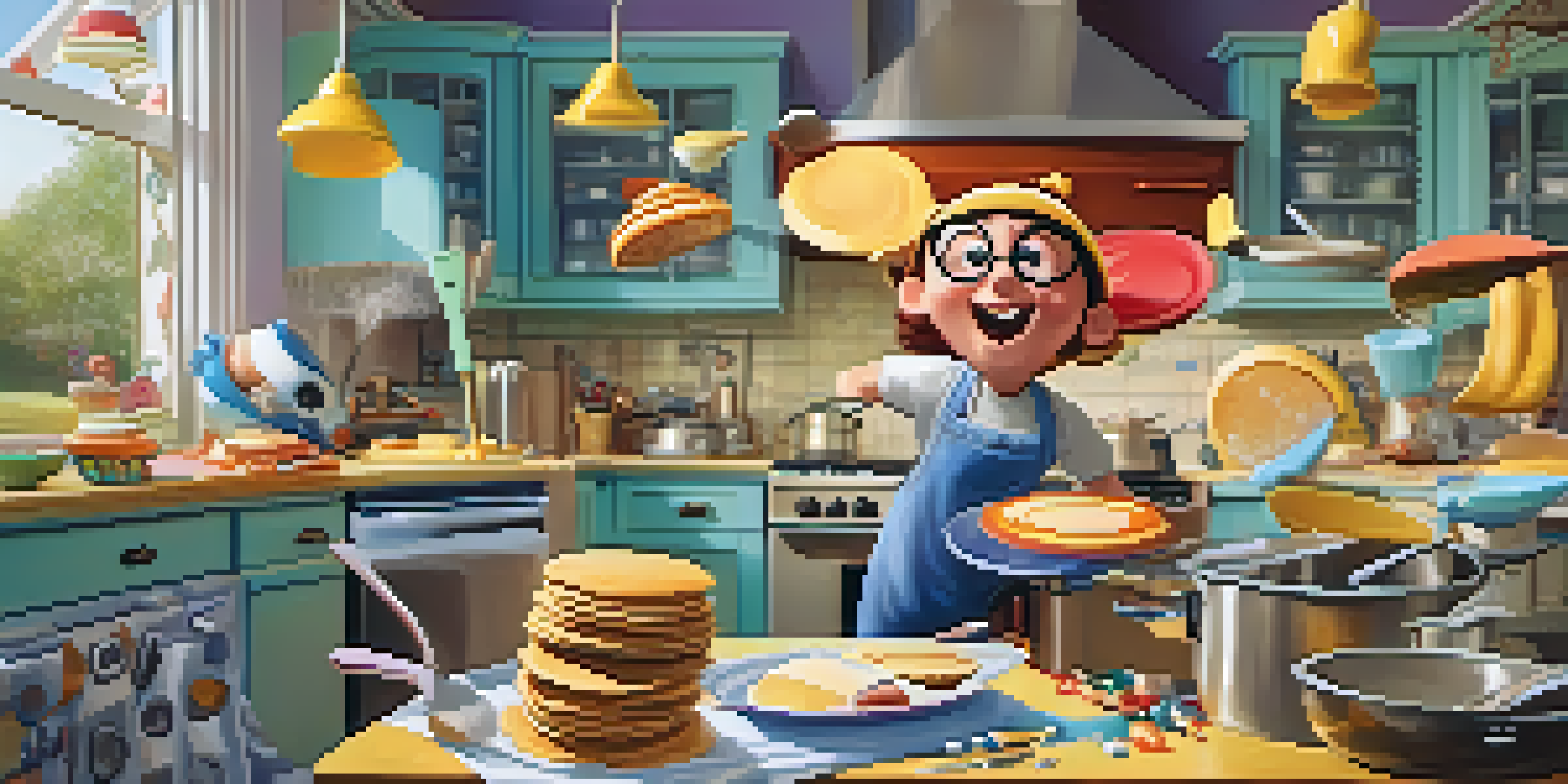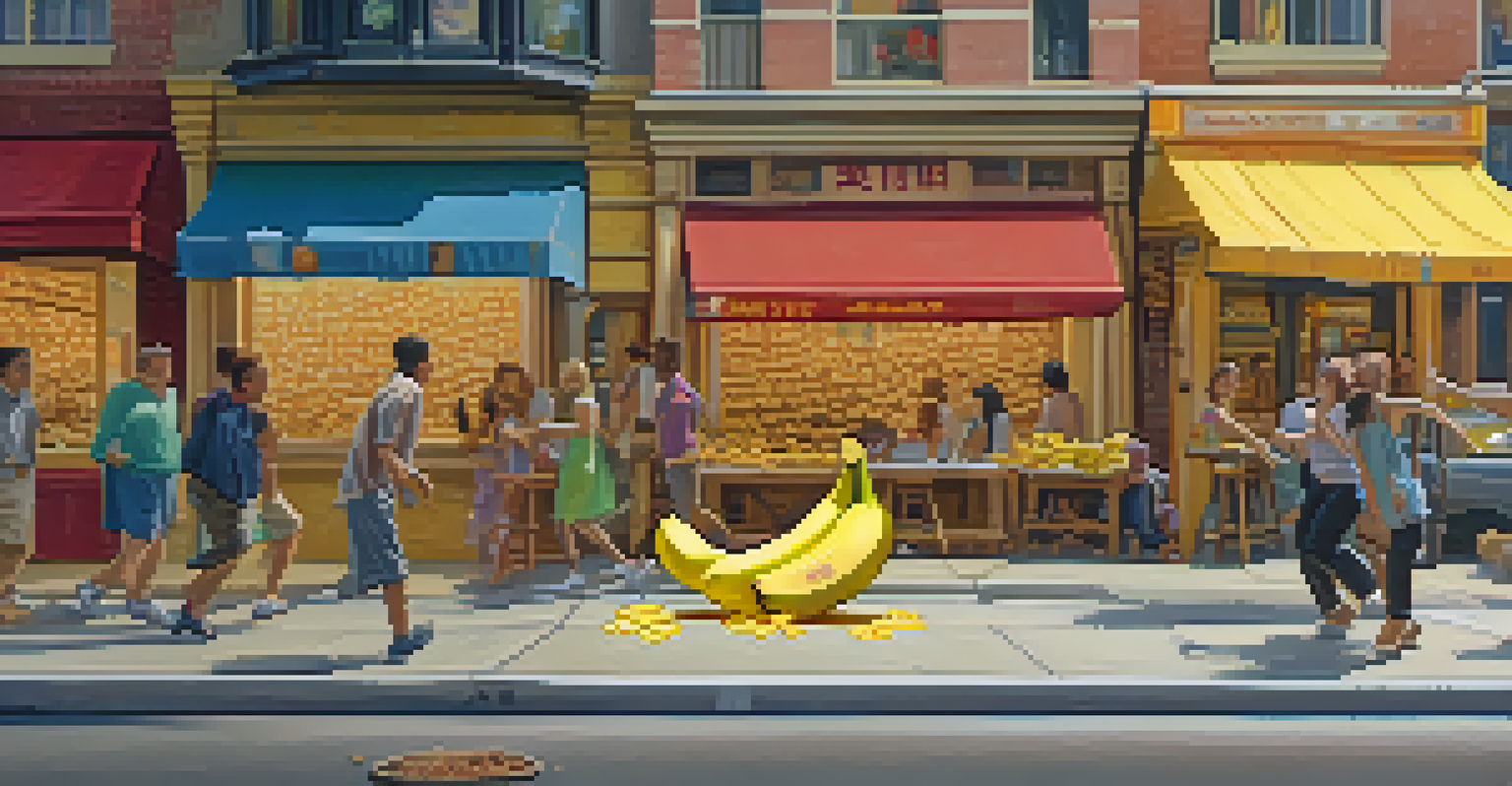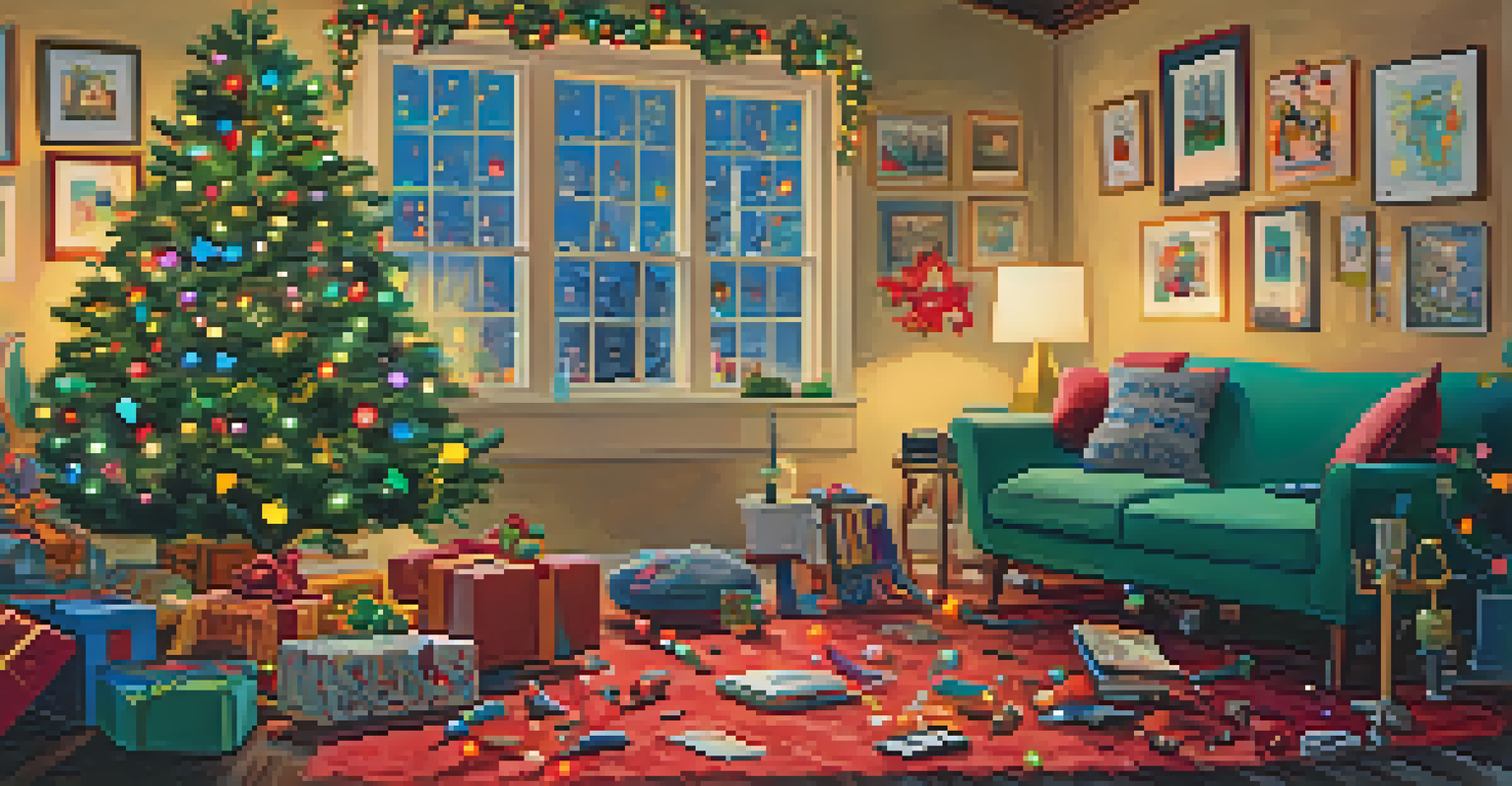Visual Humor: Techniques That Enhance Film Storytelling

Understanding Visual Humor in Film Storytelling
Visual humor is a unique way to convey comedy through imagery rather than dialogue. It often relies on clever visual gags, slapstick, or exaggerated expressions that create immediate laughter. A classic example is the iconic banana peel slip, where the physical act alone tells a humorous story, transcending language barriers.
Visual humor is like a universal language; it transcends culture and connects us all through laughter.
This technique not only entertains but also strengthens the narrative by revealing character traits and motivations. For instance, a character's clumsiness might be highlighted through a series of visual mishaps, making them relatable and endearing to the audience. By presenting humor visually, filmmakers can engage viewers on a more instinctive level.
Moreover, visual humor can break the tension in dramatic scenes, providing much-needed relief. Think about how a well-timed comedic moment can shift the mood and add depth to the story. This balance creates a more rounded viewing experience, showcasing the versatility of visual storytelling.
The Role of Timing in Visual Humor
Timing is crucial in visual humor; a well-executed gag can fall flat without the right pacing. Filmmakers often rely on the concept of 'set-up and pay-off,' where a seemingly innocuous moment leads to a hilarious climax. For example, in animated films, characters may engage in exaggerated movements that build anticipation before delivering the punchline.

In live-action films, timing can be enhanced through editing techniques like quick cuts or slow-motion sequences. These methods help emphasize the humor, allowing the audience to savor the moment. Just like a musician hitting the right notes at the right time, filmmakers must strike a balance to make their humor resonate.
Visual Humor Enhances Storytelling
Visual humor not only entertains but also reveals character traits and enriches the narrative.
Additionally, the juxtaposition of serious moments with sudden bursts of visual humor can create an unexpected yet delightful impact. This contrast keeps audiences engaged, as they are never quite sure what to expect next, making the viewing experience dynamic and entertaining.
Character Expressions: A Key Element of Visual Humor
Facial expressions are often the heart of visual humor, conveying emotions without uttering a single word. A slight raise of an eyebrow or a comical grimace can tell viewers everything they need to know about a character's feelings. Think of Jim Carrey's exaggerated expressions in 'The Mask'—they amplify the comedic effect and create memorable moments.
Comedy is simply a funny way of being serious.
These expressions not only elicit laughter but also connect audiences to the characters on a deeper level. When viewers can see the ridiculousness of a situation reflected in a character’s face, it enhances their emotional investment in the story. This connection fosters a more immersive experience, drawing people further into the film's world.
Moreover, the use of visual humor through expressions allows filmmakers to convey complex emotions quickly. Instead of lengthy explanations, a single look can encapsulate a character's inner turmoil or absurdity, making storytelling more efficient and engaging.
Utilizing Props and Set Design for Humor
Props and set design play a significant role in visual humor, often serving as catalysts for comedic situations. A seemingly ordinary object can become a source of laughter when used in an unexpected way. For instance, a simple kitchen tool, like a spatula, can lead to a series of slapstick moments if mishandled by a character.
Set design can also enhance visual humor by creating a backdrop that sets the tone for comedic events. Think about the chaotic, colorful environments of animated films, which invite silliness and encourage humorous interactions. These vibrant settings become integral to the storytelling, making the humor feel organic.
Timing is Key for Comedic Impact
Proper timing and pacing in visual humor can significantly amplify the comedic effect of a scene.
Additionally, clever placement of props can foreshadow upcoming gags, creating a delightful sense of anticipation. Viewers might notice an object in the background that later becomes central to a comedic moment, rewarding their attention to detail and enhancing their overall experience.
The Importance of Visual Storytelling Techniques
Visual storytelling techniques are essential in conveying humor effectively. Techniques such as foreshadowing, visual metaphors, and exaggerated actions can heighten comedic impact. For example, a character slipping on ice can serve as both a gag and a metaphor for their clumsiness, enriching the narrative.
By integrating these techniques, filmmakers can create a layered storytelling experience. Visual humor becomes not just a moment of laughter but a crucial component of character development and plot progression. It allows for subtler jokes that resonate with viewers on multiple levels.
Moreover, these techniques encourage creativity and innovation in filmmaking. When directors and writers think outside the box, they discover new ways to engage audiences through humor, ensuring that each film feels fresh and exciting.
Cultural Context and Its Impact on Visual Humor
Cultural context plays an essential role in how visual humor is perceived and understood. What is funny in one culture may not translate well to another, highlighting the importance of understanding your audience. For instance, slapstick humor may resonate universally, while specific visual puns might require cultural knowledge to appreciate.
Filmmakers often adapt their visual humor to cater to diverse audiences, ensuring that it remains relatable and impactful. This adaptability demonstrates the power of visual storytelling, allowing humor to bridge cultural divides. By tapping into shared experiences, filmmakers can create moments that resonate globally.
Cultural Context Shapes Humor's Reach
Understanding cultural context is crucial for filmmakers to create relatable and impactful visual humor.
Additionally, cultural references embedded in visual humor can enhance the storytelling. When viewers recognize a familiar trope or symbol, it creates a sense of connection and shared understanding, making the humor all the more effective.
The Lasting Impact of Visual Humor in Film
The impact of visual humor extends beyond the laughter it evokes; it shapes the way stories are told in film. Iconic comedic moments often become part of cinematic history, influencing future filmmakers and setting standards for humor. Classic films like 'Monty Python and the Holy Grail' are celebrated for their inventive visual gags that continue to inspire new generations.
Moreover, the evolution of visual humor reflects societal changes and attitudes, making it a rich area for exploration in film studies. As cultural norms shift, so too does the type of humor that resonates with audiences, ensuring that visual comedy remains relevant and engaging.

Ultimately, visual humor enhances storytelling by fostering emotional connections, breaking tension, and providing a shared experience for viewers. Its enduring appeal underscores the importance of creativity in filmmaking, reminding us that laughter is a universal language that transcends boundaries.